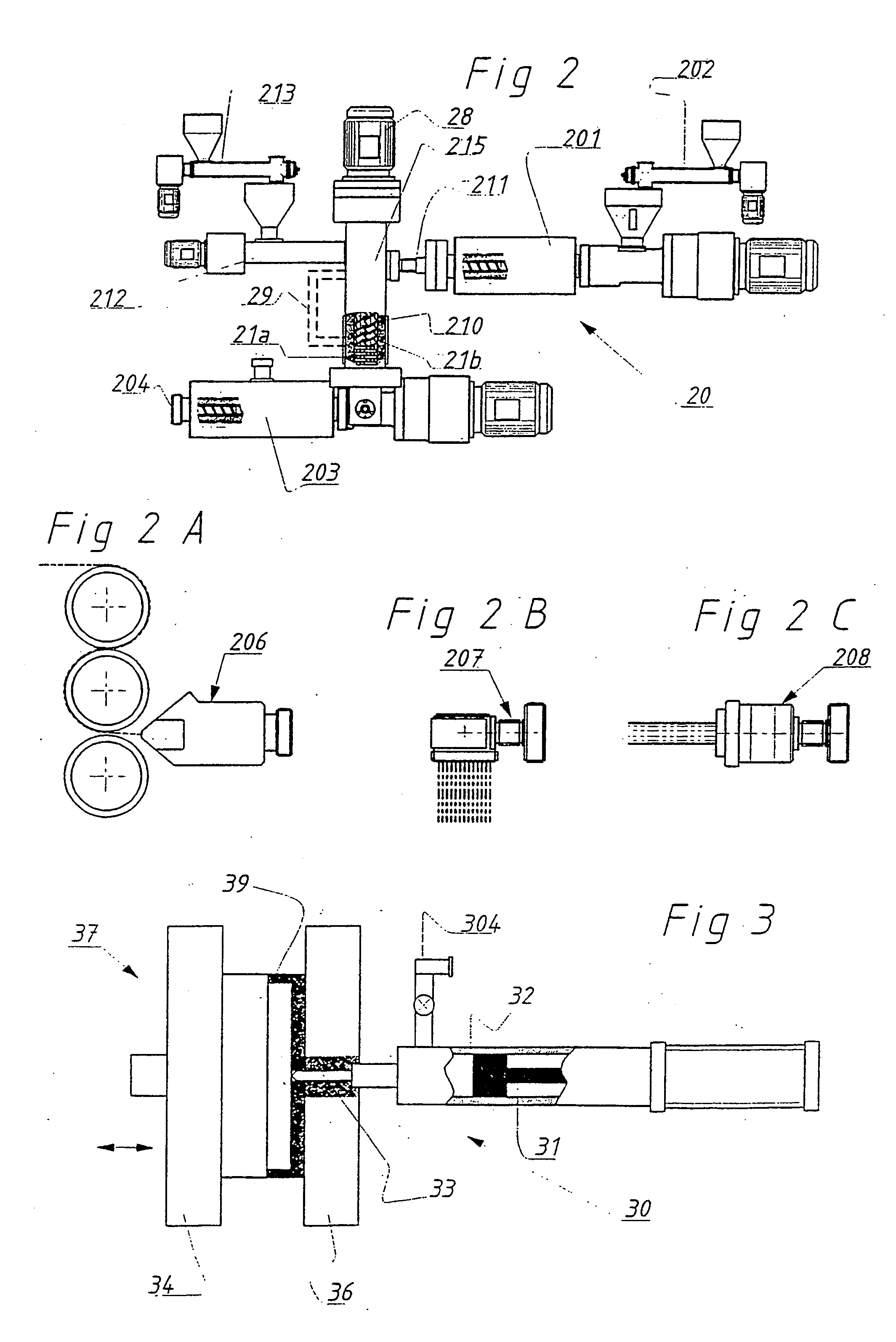Mixing and kneading device for polymer compositions
- Summary
- Abstract
- Description
- Claims
- Application Information
AI Technical Summary
Benefits of technology
Problems solved by technology
Method used
Image
Examples
example 1
[0073] Recycled polypropylene was plasticated in the upstream processor (screw diameter 45 mm, length 25 D) of an apparatus as shown in FIG. 2 and introduced into the port device (a co-rotating, fully intermeshing self-wiping twin screw; screw diameter 60 mm, length 10D and a non-conveying end portion as shown in 1B) as a plasticated polymer composition under operating conditions for plastication. Chopped glass fibers with an initial length of about 8 to 10 mm were added by a metering device so as to make up about 30% by weight of the final composition that is passed from the port device to the downstream processor and from there into an extrusion head and, further downstream, into a calibration section for producing structural panels having a rigidity of above 7,000 MPa.
example 2
[0074] Commercial linear low density polyethylene (LLDPE) was plasticated in the upstream processor of an apparatus as shown in FIG. 2 and as specified in Example 1 and introduced into the port device (non-conveying end portion as shown in FIG. 1A) as a plasticized polymer composition. Micronized calcium carbonate was added by a metering device so as to make up about 50% by weight of the final composition that is passed from the port device to the downstream processor equipped for producing high filled stretchable film.
[0075] The product film obtained had a very good appearance and was capable of passing water vapor after stretching (up to about 3.5 times its length in unstretched state).
example 3
[0076] A series of tests were made with a port device as shown in FIG. 1 having a D / d ratio (ratio of inner barrel diameter to the same value reduced by twice screw depth) of 1.72 and a vertical arrangement. Different polymer melt compositions were processed at various speeds, residence times and mixing volumes according to the specific task to be achieved. The results are displayed in Table 1.
TABLE 1(Screw diameter 60 mm)FillingAv.Mixingrate inShearaxialMixingtheVolumetricMixingMixerAv. ShearStrainCompCaselengthVolumemixingflow rateThroughputTimespeedRate(StrainarativeNo.(m)(m3)section(m3 / s)(kg / hr)(s)(rpm)(s−1)Units)*strain10.100.0001810.0000029106210 2,5155 120.150.0002710.0000029109410 2,5235 1,5130.200.0003610.00000291012410 2,5310 240.100.0001810.0000029106220 5310 250.100.0001810.0000029106230 7,5465 360.100.0001810.00001462501230 7,590 0,5870.100.0003610.00000291012420050620040
*The actual shear rate was calculated for a screw channel depth of 12,5 mm and the comparative she...
PUM
| Property | Measurement | Unit |
|---|---|---|
| Length | aaaaa | aaaaa |
| Length | aaaaa | aaaaa |
| Time | aaaaa | aaaaa |
Abstract
Description
Claims
Application Information
 Login to View More
Login to View More - R&D
- Intellectual Property
- Life Sciences
- Materials
- Tech Scout
- Unparalleled Data Quality
- Higher Quality Content
- 60% Fewer Hallucinations
Browse by: Latest US Patents, China's latest patents, Technical Efficacy Thesaurus, Application Domain, Technology Topic, Popular Technical Reports.
© 2025 PatSnap. All rights reserved.Legal|Privacy policy|Modern Slavery Act Transparency Statement|Sitemap|About US| Contact US: help@patsnap.com



